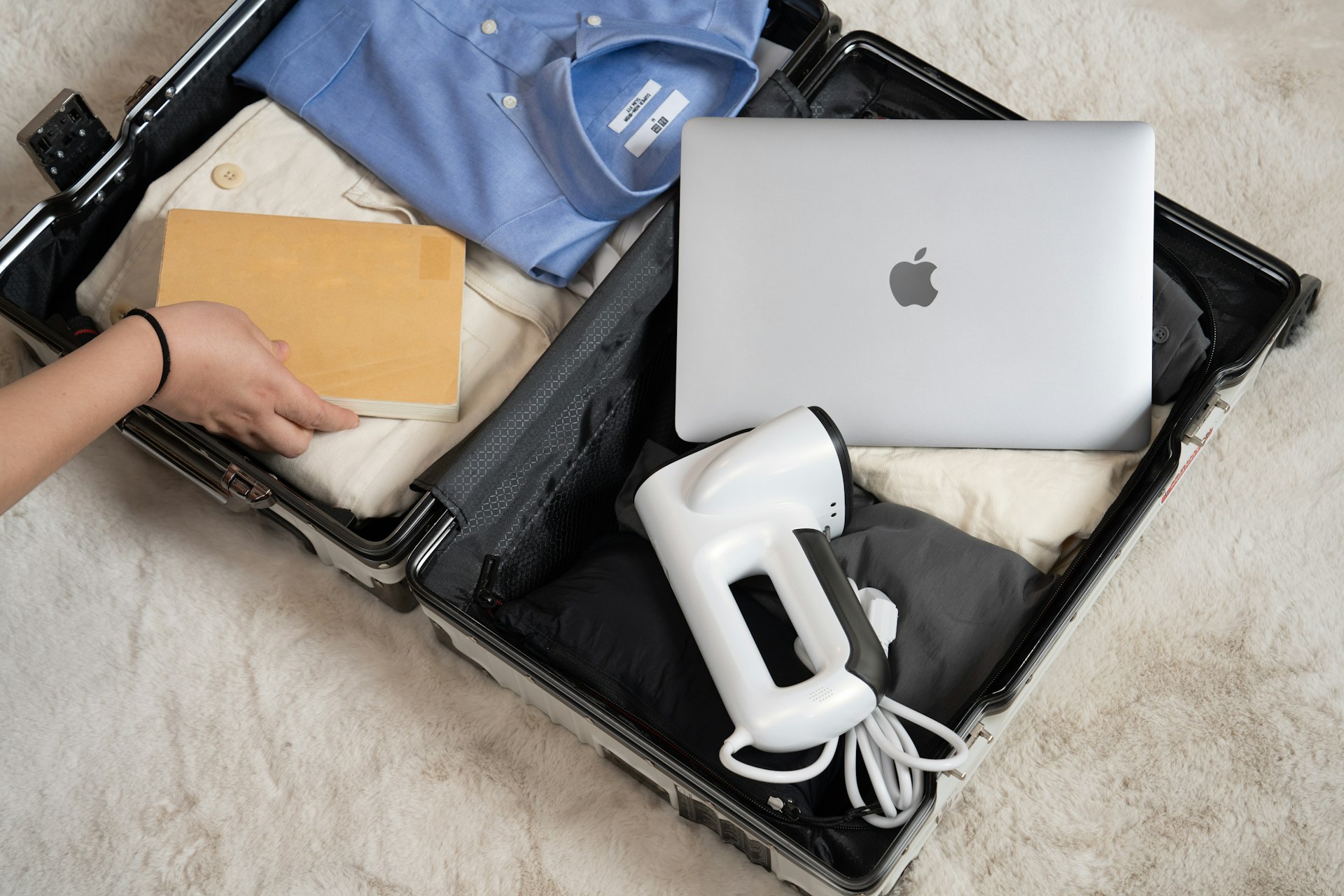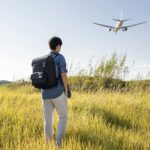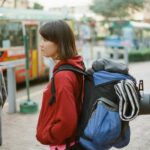Mastering the Art of Packing Light: Essential Strategies for Long-Term Travel


Photo by Neakasa on Unsplash
Introduction: Why Packing Light Matters for Long-Term Travel
Packing light is more than a convenience-it’s a transformative approach that brings freedom and flexibility to long-term travel. Minimizing your luggage means less physical burden, lower baggage fees, easier movement between destinations, and greater peace of mind. In this comprehensive guide, you’ll learn actionable strategies to curate your belongings, maximize utility, and confidently embark on extended journeys with everything you need-and nothing you don’t [3] .
Building a Travel Capsule Wardrobe
The foundation of packing light is a carefully chosen capsule wardrobe. This means selecting a limited number of clothing items that can be mixed and matched to create multiple outfits.
Step-by-Step Guidance:
- Choose versatile basics that suit your destination’s climate. For most travelers, this includes 3-4 tops, 2-3 bottoms, a light jacket, and 1-2 layering pieces for warmth [1] [4] .
- Opt for neutral colors and easy-care fabrics. This enables you to combine pieces in different ways and easily wash them on the road.
- Plan to do laundry regularly-once a week is sufficient for most trips. This allows you to pack fewer items and reuse them [5] .
- Example: Pack 2 T-shirts, 2 tank tops, 1 pair of pants, 1 pair of shorts, 1 dress, 1 cardigan, and 7 pairs of underwear for a trip of any length [2] .
Challenge: Fear of not having “enough.” Solution: Remember that you can purchase or replace items abroad if necessary, and most cities have laundry services or facilities.
Selecting the Right Luggage and Packing Tools
The size and style of your bag set the limits for what you can bring. For long-term travel, a backpack or duffel in the 35- to 45-liter range is usually ideal [5] .
Step-by-Step Guidance:
- Check airline carry-on limits and choose a bag that fits within these specifications to avoid checked baggage fees [5] .
- Use packing cubes or compression bags to organize and reduce the volume of your clothing.
- Roll clothes instead of folding to maximize space and minimize wrinkles.
- Example: An ultralight 25-liter bag can carry all essentials for work, leisure, and daily life on the road [3] .
Challenge: Overpacking “just in case” items. Solution: Lay out everything you plan to bring, then remove anything you can easily buy at your destination.
Essential Clothing and Footwear Choices
Prioritize versatile, quick-drying, and lightweight clothing. Choose shoes that serve multiple purposes and are comfortable for walking.
Step-by-Step Guidance:
- Limit yourself to two or three pairs of shoes: one sturdy pair for walking or hiking, one pair of sandals or flip-flops, and, optionally, one pair of flats for dressier occasions [4] .
- For colder climates, pack a lightweight down or synthetic jacket, gloves, and a hat. Layering is key to staying warm without bulky clothing [1] .
- Swimsuits, a scarf or pashmina, and a set of sleepwear round out the basics.
- Example: One traveler recommends Converse sneakers, Birkenstock sandals, and Havaianas flip-flops for a complete set [2] .
Challenge: Packing for multiple climates. Solution: Layer clothing and select items that work in various temperatures. If necessary, purchase climate-specific gear locally.
Streamlining Toiletries and Personal Care
Keep toiletries to a minimum by using solid or multipurpose products. Choose travel-sized containers and refill as needed.
Step-by-Step Guidance:
- Bring only what you use daily; leave behind luxury or occasional-use items.
- Switch to solid shampoo, conditioner, and soap to save space and avoid liquid restrictions.
- Pack essential medications, a small first aid kit, and a microfiber towel.
- Use a silicone or waterproof toiletry bag for longevity and leak prevention [5] .
Alternative: Many items can be purchased or replenished at your destination to further reduce initial packing load.
Electronics and Travel Essentials
Choose lightweight, multi-use devices. Only bring electronics that are essential for your work, communication, or entertainment.
Step-by-Step Guidance:

Photo by Visualss on Unsplash
- Pack a smartphone with a quality camera, a compact laptop or tablet, and necessary charging cables [1] .
- Bring universal travel adapters and a portable battery pack for convenience [4] .
- Upload important documents (passports, insurance, prescriptions) to a secure cloud service for easy access.
- Carry a reusable water bottle and, if traveling to places with uncertain water quality, a portable purification device.
Challenge: Deciding which electronics to bring. Solution: Consider your daily needs and the practicality of replacing or repairing devices abroad.
Mindset and Packing Process: Less is More
Traveling light is as much about mindset as it is about logistics. Focus on flexibility and adaptability. Packing light lets you move easily, adapt to new situations, and enjoy your journey with fewer worries.
Step-by-Step Guidance:
- Lay out all intended items, then remove anything nonessential.
- Ask yourself if each item serves more than one purpose or brings significant value to your comfort and safety.
- Wear your bulkiest clothes on travel days to save space in your bag.
- Be willing to adjust and refine your packing list after your first trip-experience is the best teacher.
Example: Many seasoned travelers report that after their first long-term journey, they often cut their packing list by half for subsequent trips [3] .
Accessing Laundry, Supplies, and Replacements Abroad
One of the biggest concerns when packing light for long-term travel is access to laundry and the ability to replace items if needed.
Step-by-Step Guidance:
- Laundry facilities are widely available in most cities and towns; search for “self-service laundry” or inquire at hostels and hotels.
- Many accommodations offer laundry services for a small fee. In rural areas, hand-wash clothing in sinks using a small amount of biodegradable soap.
- Replacement clothing and toiletries are available in most destinations. Local markets and stores often offer affordable options, and international brands can be found in major cities.
- For special needs (such as prescription medication), consult your healthcare provider for advice on travel-friendly options and international availability.
Alternative Approach: If your itinerary includes remote or underdeveloped regions, consider packing slightly more of essential items, but maintain your commitment to overall lightness by eliminating nonessential extras.
Key Takeaways and Final Tips
Packing light for long-term travel requires careful planning, practical choices, and an openness to adapt on the road. Focus on versatile, durable, and essential items. Embrace the freedom of carrying less, enjoy the flexibility it brings, and remember that you can access most necessities wherever you go. The ultimate goal is to travel smarter, not harder-giving you more energy and time to explore the world.
References
- [1] Nori (2024). Minimalist Travel Packing List for 2024.
- [2] MS Travel Solo (2024). My Minimalist Packing List for Every Trip.
- [3] The Packable Life (2025). Minimalist Travel Packing List: Gear Nerd Essentials.
- [4] A Little Adrift (2025). Packing List for Long-Term Travel.
- [5] Jill on Journey (2024). Minimalist Travel | Carry-on Only Packing List.






